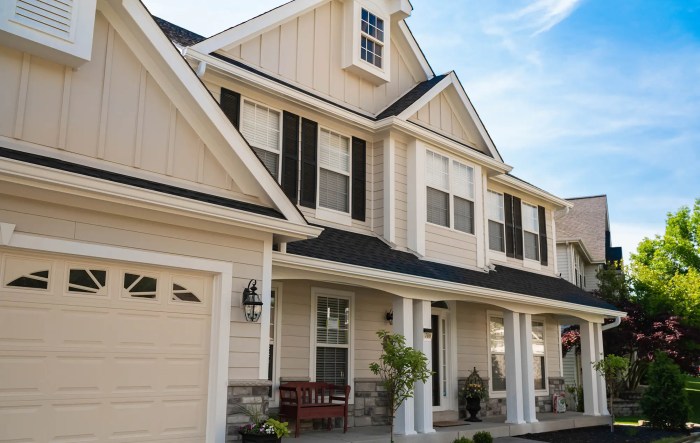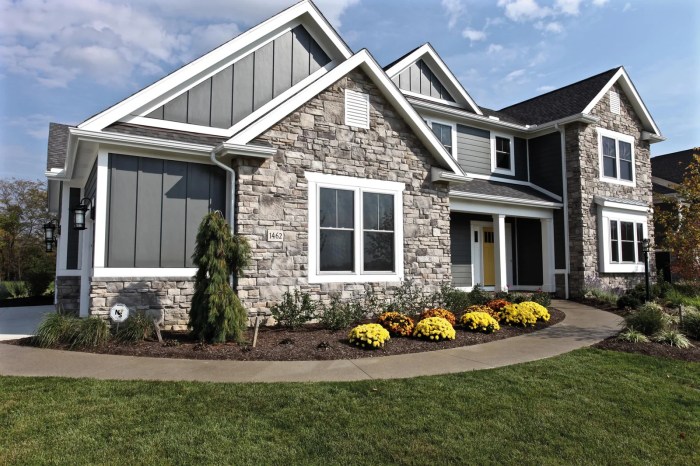Choosing the Right Exterior Siding Accents for Your Home
Exploring the world of exterior siding accents can open up a realm of possibilities for transforming the look of your home. From classic wood to modern fiber cement, the options are endless. Let's dive into the details of how these accents can enhance the overall aesthetic appeal of your property.
Types of Exterior Siding Accents
When it comes to enhancing the visual appeal of your home's exterior, siding accents play a crucial role. There are various types of siding accents available in the market, each with its own unique characteristics and aesthetic appeal.
Wood Siding
Wood siding accents are a classic choice that exudes warmth and natural beauty. They can be crafted from cedar, pine, or redwood, offering a timeless look that complements traditional and rustic home styles.
Vinyl Siding
Vinyl siding accents are popular for their durability and low maintenance. They come in a wide range of colors and styles, making them a versatile option for modern homes seeking a clean and sleek appearance.
Fiber Cement Siding
Fiber cement siding accents combine the look of wood with the durability of concrete. They are resistant to rot, fire, and pests, making them a practical choice for homeowners looking for a long-lasting and low-maintenance solution.
Stone Siding
Stone siding accents add a touch of elegance and luxury to a home's exterior. Whether natural or manufactured, stone siding can create a striking focal point and enhance the architectural beauty of your property.Examples of homes with different types of siding accents:
- A cozy cottage with charming wood siding accents.
- A modern farmhouse featuring sleek vinyl siding accents.
- A contemporary home showcasing bold fiber cement siding accents.
- A luxurious estate adorned with elegant stone siding accents.
Design and Placement

When it comes to choosing the right siding accents for a home, it's essential to consider the architectural style of the property. Traditional homes may benefit from classic accents like shutters or dentil molding, while modern homes could look stunning with sleek metal accents or geometric shapes.Color coordination between siding and accents is crucial for achieving a cohesive and visually appealing look.
Harmonizing the colors can create a sense of balance and unity, while contrasting colors can make a bold statement. Consider the existing colors of your home's exterior and choose accents that complement or contrast effectively.
Tips for Creative Incorporation
- Think about using accents to draw attention to key architectural features, such as windows or doors.
- Experiment with different materials for siding accents, like wood, vinyl, or stone, to add texture and visual interest.
- Consider mixing and matching siding styles and colors to create a unique and personalized look.
- Use accents strategically to create visual focal points and guide the eye around the exterior of your home.
Best Practices for Placement
- Place siding accents near entryways to create a welcoming and inviting feel.
- Use accents to highlight architectural details like gables, dormers, or porches.
- Avoid overwhelming the facade with too many accents - less is often more when it comes to exterior design.
- Consider the scale and proportions of your home when placing accents to ensure they enhance the overall aesthetic.
Maintenance and Durability

When it comes to maintaining the beauty and longevity of exterior siding accents, different types require specific care to ensure durability and resistance to weather conditions.
Maintenance Requirements for Different Types of Siding Accents
- Vinyl Siding: Regularly wash with a solution of water and mild detergent to remove dirt and grime. Inspect for any cracks or damage that may need repair.
- Wood Siding: Apply a fresh coat of paint or sealant every few years to protect against moisture and rot. Inspect for signs of mold or mildew.
- Fiber Cement Siding: Clean with a mixture of water and mild soap. Inspect for any chips or cracks that may need to be repaired.
Weather Impact on Durability
Extreme weather conditions such as heavy rain, snow, or intense sunlight can impact the durability of siding accents. Constant exposure to harsh weather can lead to fading, warping, or cracking of the material.
Recommendations for Increasing Longevity
- Regular Inspections: Check for any signs of damage or wear and tear to address issues promptly.
- Proper Installation: Ensure siding accents are installed correctly to prevent water infiltration and damage.
- Maintain Landscaping: Trim trees and bushes near siding accents to prevent damage from branches or overgrowth.
Cleaning and Preserving Appearance
- Gentle Cleaning: Use a soft brush or cloth to remove dirt and debris without causing scratches or damage to the surface.
- Avoid Harsh Chemicals: Refrain from using strong chemicals that can strip the finish or color of the siding accents.
- Regular Maintenance: Schedule periodic cleaning and touch-ups to keep siding accents looking fresh and well-maintained.
Cost and Installation
When considering exterior siding accents, it's essential to factor in the cost and installation process. The type of material you choose can significantly impact both the initial investment and the ease of installation.
Cost Factors
- Material Cost: Different siding accent materials vary in price, with options like vinyl being more budget-friendly compared to natural stone or wood.
- Labor Cost: Hiring professionals for installation will come at an additional cost, so consider whether you have the skills and time for a DIY approach.
- Maintenance Cost: Some materials might require more upkeep, leading to additional expenses over time.
Installation Process
- Vinyl Siding: Relatively easy to install, especially with interlocking panels that snap into place. DIY-friendly with proper tools and instructions.
- Natural Stone: Requires expertise due to the weight and precision needed for installation. Best left to professionals for a seamless finish.
- Fiber Cement: Can be DIY-friendly with the right tools, but cutting and handling the material might require some skill and caution.
DIY Tips
- Prepare the surface: Ensure the area is clean, smooth, and properly sealed before starting the installation.
- Follow instructions: Different materials have specific guidelines for installation, so make sure to read and understand them thoroughly.
- Use the right tools: Invest in quality tools that are suitable for the material you are working with to ensure a successful installation.
Professional Installation Benefits
- Expertise: Professionals have the experience and skills to handle complex installations, ensuring a high-quality result.
- Time-saving: Hiring professionals can save you time and effort, especially if you have a busy schedule or lack experience in siding installation.
- Warranty: Many professionals offer warranties on their work, giving you peace of mind knowing that any issues will be taken care of.
Ending Remarks
As we conclude our discussion on exterior siding accents, it's evident that these subtle details play a significant role in elevating the beauty of any home. By carefully selecting, placing, and maintaining these accents, you can truly make a lasting impression.
Expert Answers
How do I choose the right siding accent for my home?
Consider the architectural style of your home and opt for accents that complement its design.
What are some tips for maintaining siding accents?
Regular cleaning and inspections can help prolong the lifespan of your siding accents.
Is it necessary to hire professionals for siding accent installation?
While DIY installation is possible, professionals can ensure a more precise and efficient placement of siding accents.